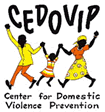SASA! Activist Kit for Preventing Violence against Women and HIV
How are you using your power? This is a central question explored in the SASA! approach. Provocative and systematic, SASA! is a creative approach for changing the social norms that perpetuate women’s vulnerability to violence and HIV.
Why SASA!?
We know that violence against women is both a cause and a consequence of HIV infection. We know that the power imbalance between men and women fuels these pandemics. But how can we address such a complex and deeply rooted issue? SASA! is Raising Voices’ response to this question. It is a comprehensive approach documented in a user-friendly program tool. Many organizations, institutions, and groups interested in mobilizing communities to prevent violence against women and HIV are using SASA!.
How SASA! works
SASA is a Kiswahili word that means now. Now is the time to take action to prevent violence against women and HIV! It is also an acronym for the four phases of community mobilization that scale up the stages of change to enable a community to move through a series of activities and experiences naturally. Each phase uses four different strategies to engage community members in a variety of ways.
- During the first phase, Start, violence against women and HIV/AIDS are introduced as interconnected issues and community members begin to foster power withinthemselves to address these issues.
- In the second phase, Awareness, community members experience a growing awareness about how our communities accept men’s use of power overwomen, fueling the dual pandemics of violence against women and HIV.
- Throughout the third phase, Support, community members will discover how to support the women, men and activists directly affected by or involved in these interconnected issues, by joining their power withothers’.
- In the fourth and final phase, Action, community members will explore different ways to take action. Use your power toprevent violence against women and HIV.
SASA! includes practical resources, activities and monitoring and assessment tools for local activism, media and advocacy, communication materials and training that organizations working on violence or HIV/AIDS can use to incorporate these cross-cutting issues into their work.
